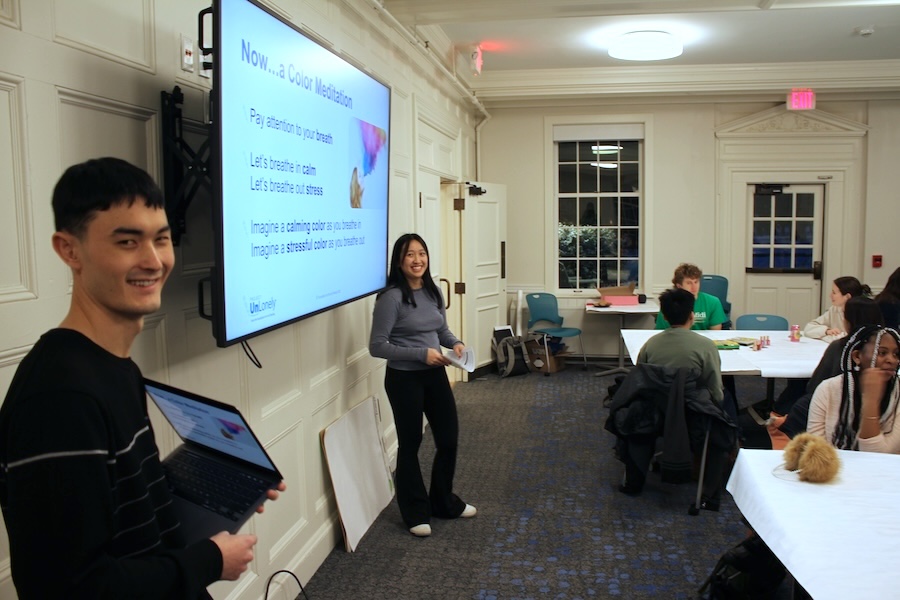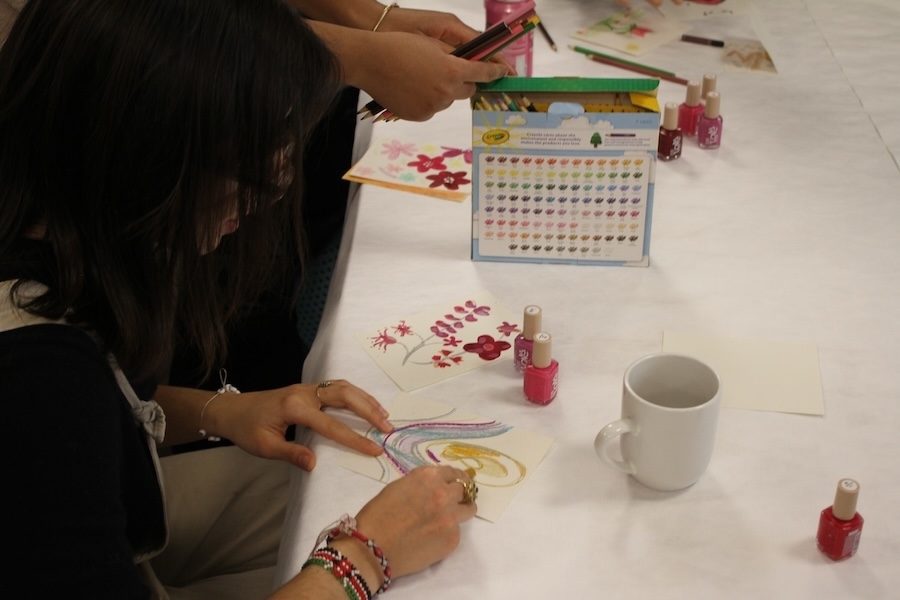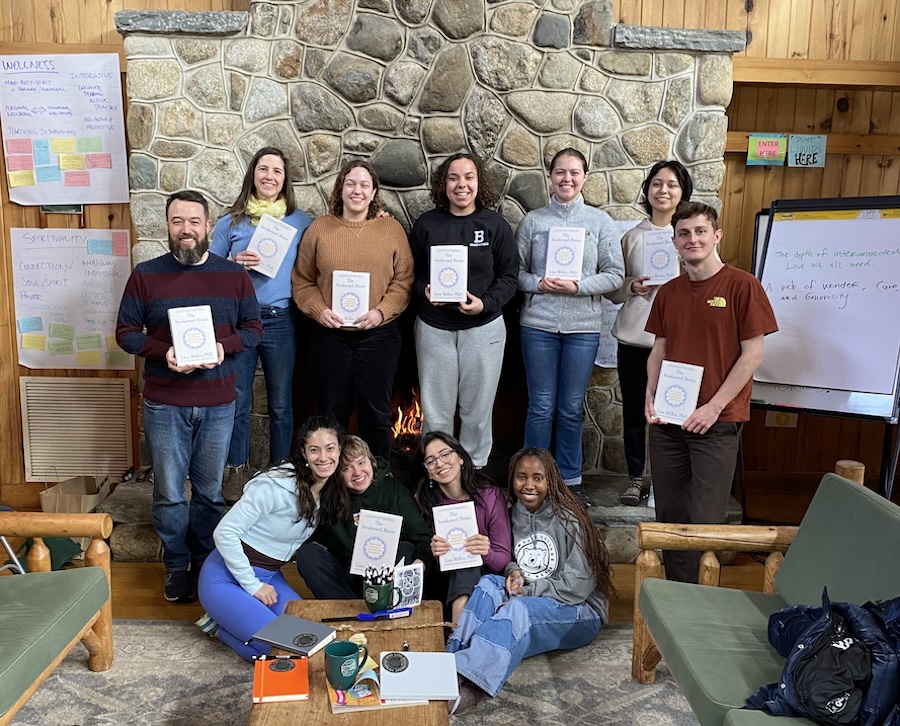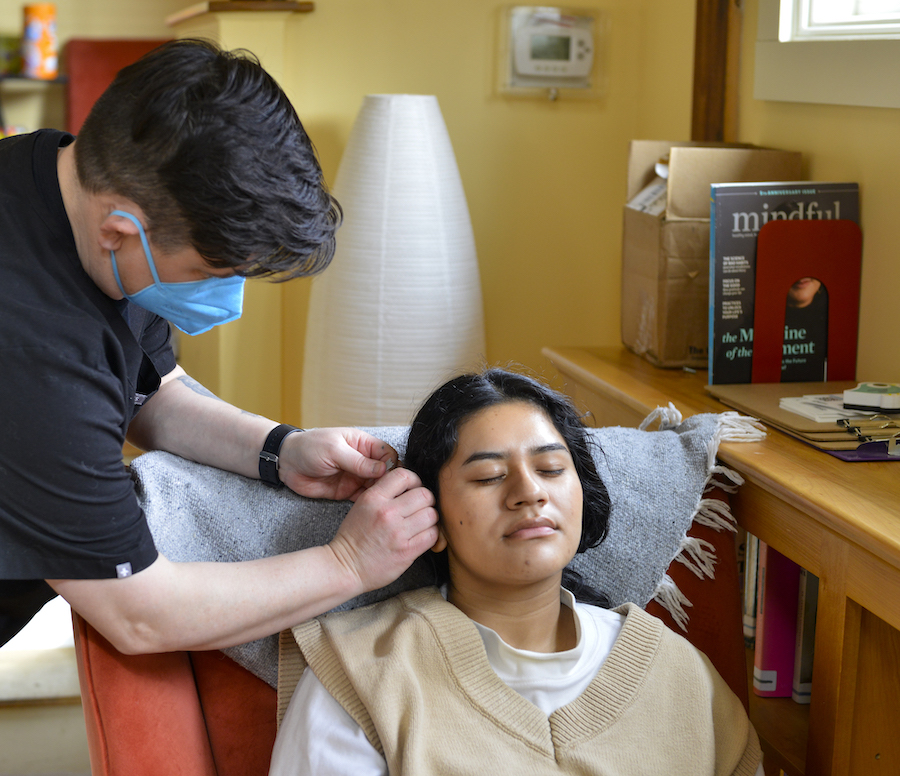Becoming “Unlonely” Through Art
By Neiman Mocombe ’26
Active Minds is the student chapter of a national organization that works with schools, communities, and workplaces to promote mental health, especially among young adults, through interaction and dialogue. Bowdoin Public Health is a community-service program whose members volunteer with local public health-related organizations.
Kate Nicholson, assistant director of student wellness programs, organized Colors & Connection with two of the student group co-leaders, Jared Lynch ’24 and Melisa Su ’24.
Students trickled into Ladd House for the recent evening program, helping themselves to hot drinks and Wild Oat pastries. They were asked to sit at a table with people they didn't know well.
Each table was arranged with an assortment of paints, dyes, markers, and paper. Lynch and Su then led the group through a therapeutic and meditative session that had students use the colored media to illustrate their mood, memory, and personality.
The room was full, with about thirty students, and the prompts elicited conversation, reflection, and bursts of laughter.








After the guided exercises, Lynch, Su, and Nicholson spoke about the links between art-focused meditation and community building. “Making art can foster easy, meaningful connections,” Nicholson noted.
Creative expression can counter lonlieness, Lynch added. “The arts not only give us an outlet to express what words cannot, but also serve as a starting point for a conversation—an opportunity for connection, whether existing momentarily or sparking a new friendship.”
Su said one of the goals of the event was to confront the stigma behind loneliness in the age group where it presents itself the most—young adults between the ages of eighteen to twenty-four.
“Although coloring seems like a relatively low-stakes activity, we hoped that alongside the color meditation exercise and the listed facts, that participants would be able to reflect on times that they have felt lonely, and potentially be more open to discussing and confronting loneliness in the future,” she said.
“This [Colors & Connection] event lies at the intersections of mental health and community well-being,” Nicholson said. “Mental health is a physical, mental, and social issue.”
The workshop was designed by The Foundation for Art and Healing as part of their “Project Unlonely” initiative.


